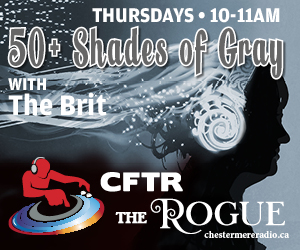Your humble narrator attended an Italian wedding last week, and tasted two very different wines made from the same grape.
Fans of Italian wines may be familiar with Amarone, which loosely translates to “the great bitter”.
Amarone is not a type of grape, but rather a style of wine made from the Corvina and Rondinella grapes, grown in a particular area just a bit north of the Italian town of Verona, which is well known to all college students who read Romeo and Juliet.
Unlike most wines, Amarone is made by picking clusters of grapes from the vines, then laying them on straw mats or special drying kilns for up to 120 days to dry the grapes to a shriveled raisinlike form.
When around 60% of the water has been evaporated from the grapes, the winemaker then proceeds with the regular process of crushing and fermenting.
Amarone is fermented much longer than most wines, until the yeast has consumed all the residual sugar, which contributes to its bitter reputation.
Like many great discoveries, the first Amarone was created by accident, by a winemaker who forgot about a barrel of sweet dessert wine, and came back months later to find that the yeast in the barrel had consumed all the residual sugar, resulting in an uncommonly dry and bitter wine. The results were quite pleasant, and a new style of wine was born that very day.
It was likely that the winemaker was trying to create another type of wine called Recioto, which has been popular in Italy since the days of the Roman Empire.
Similar to Amarone, Recioto is made primarily from the Corvina grape varietal, and are left on the vine to ripen until the very end of the growing season.
The grapes are then dried in order to concentrate the juice into a thick and sweet nectar, which is then pressed to make a sweet dessert wine.
For millennia, the Recioto style of wine was the premier style of the entire Valpolicella wine region, with grapes planted from Verona all the way to Venice.
Indeed, those toga-wearing Romans loved sweet wine, and would often add honey, and even dilute their wines with water, in order to stay hydrated during the all-night orgies that were so common in those heady days of empire.
It was the Recioto style that put the Valpolicella wine region on the map, with Emperor Augustus proclaiming it his favourite wine as early as 27 BCE.
The unique feature of the Recioto wine style was the winemaker technique of arresting the fermentation process by removing the yeast, leaving the majority of the unfermented sugars still in the wine.
This produced a very sweet dessert wine, usually with low alcohol levels in the 12% to 13% range, due to the yeast being removed before fermentation was complete.
The aromas in Recioto tend to be of rich fruit like blueberries and blackberries, with notes of caramel and cinnamon on the palate.
Recioto remained popular until the 20th century, when consumer palates began to favour dry wines, at which time the Amarone style became ascendant.
The flavour of an Amarone can be a bit overwhelming, in no small part due to the higher alcohol content, which is rarely less than 15% ABV. Expect a full and lush mouth feel, with more tannic structure than most wines.
Amarone is a very difficult and labour-intensive wine to make, as the long drying period for the grapes presents many opportunities for spoilage or faults to develop in the wine. Unsurprisingly, the extra effort by the winemaker contributes to the high price. Expect to pay at least $50 for a bottle at your local well-stocked liquor store, and usually much closer to $100.
However, as consumer preferences wax and wane, sweeter wines have recently become more popular, so we are seeing a resurgence of Recioto, with nearly a dozen different brands available at well-stocked booze merchants in Alberta.
Expect to pay from $30 to $50 for a Recioto, which is quite a bargain when you consider the low yields after the grapes lose up to 70% of their water content during the drying process.
My favourite is the Masi Angelorum Recioto, which fans of Italian wine will recognize as a product of the Masi winery, the largest in the Valpolicella wine region.





